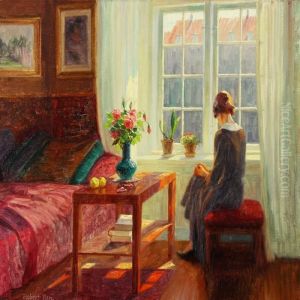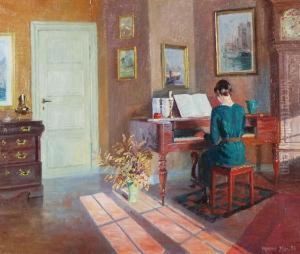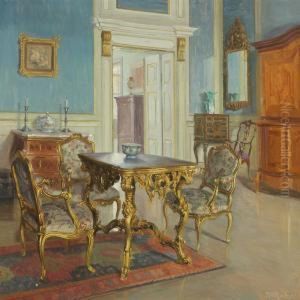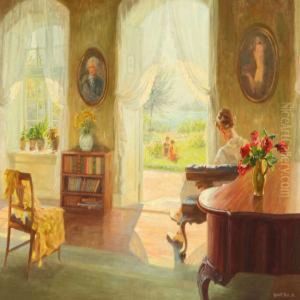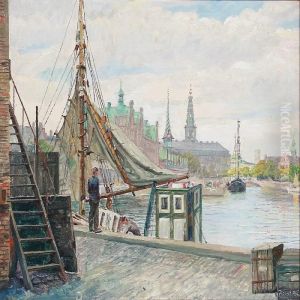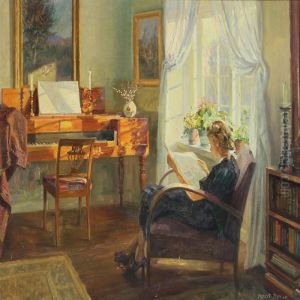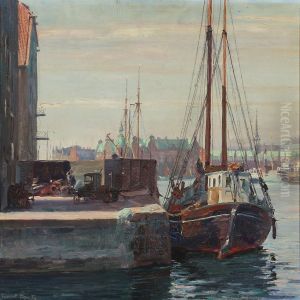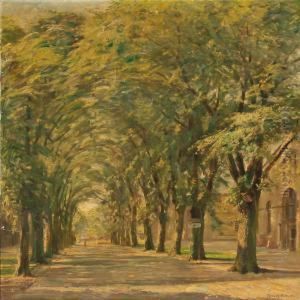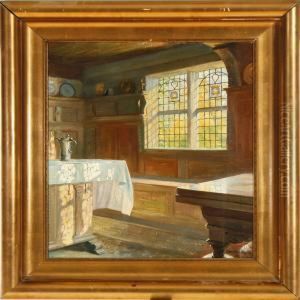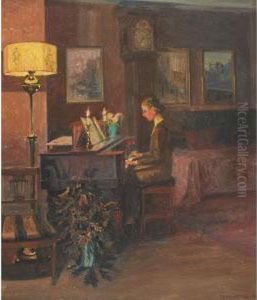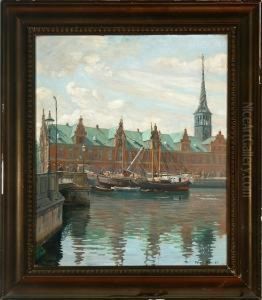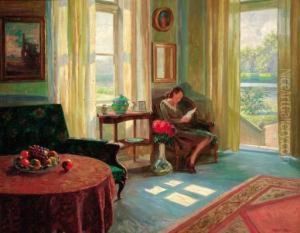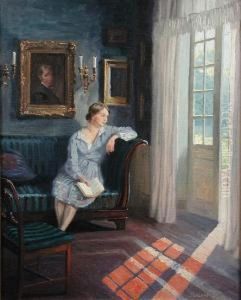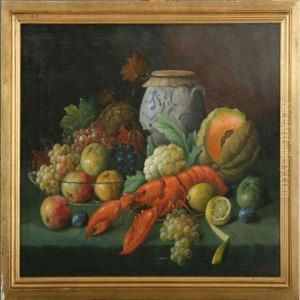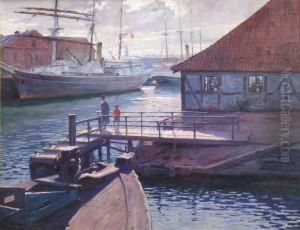Robert Panitzsch Paintings
Robert Panitzsch was a German painter known for his interior scenes, still lifes, and landscapes. Born on July 4, 1879, in Leipzig, Germany, Panitzsch demonstrated artistic talent from a young age. He studied at the Royal Academy of Arts in Munich under the guidance of notable artists such as Johann Caspar Herterich and Angelo Jank. His style was influenced by the 17th-century Dutch masters, as well as by contemporary German painting trends of his time.
Throughout his career, Panitzsch developed a reputation for his meticulous attention to detail and his ability to capture the essence of the interiors he painted. His works often feature opulent domestic scenes with rich textures and nuanced lighting. He was particularly skilled in rendering materials such as wood, metal, and fabric, which added a tactile quality to his paintings.
During the 1920s and 1930s, Panitzsch's work gained considerable popularity, and he exhibited in various shows, including those at the Munich Glaspalast, which was a major venue for art exhibitions in Germany.
Despite the political turmoil and the rise of National Socialism in Germany during the 1930s, Panitzsch maintained his focus on art, although the conditions undoubtedly affected the art scene and artists' livelihoods. After World War II, his work continued to be recognized for its craftsmanship and aesthetic value.
Robert Panitzsch passed away on August 28, 1949, in Munich. His legacy is preserved in the form of his artworks, which are still appreciated by art enthusiasts and collectors. They serve as a testament to his skill and dedication to the portrayal of beauty in everyday surroundings. Panitzsch's paintings are found in private collections and museums, and they continue to be studied by art historians interested in early 20th-century German art.





